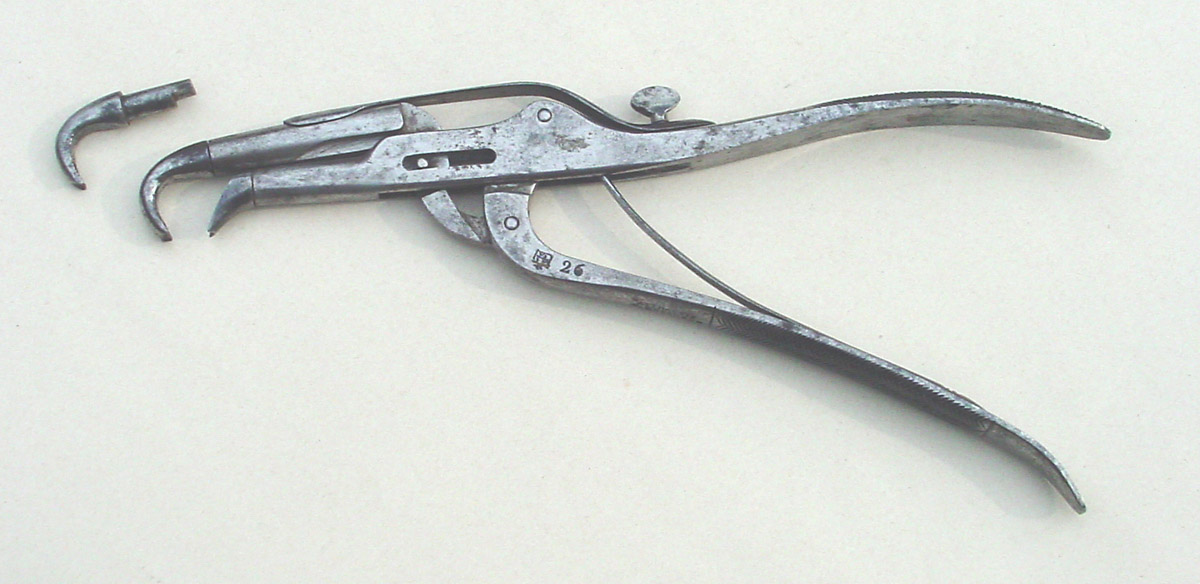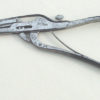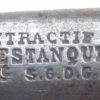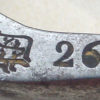Description
THE “ATTRACTIF DESTANQUES” – A SORT OF DENTAL PELICAN OF MECHANICAL COMPLEXITY, French, c. 1865, stamped “Mathieu a Paris” and “Attractif d’Estanque, B’vt. S.G.D.G.,” and stamped with a maker’s mark and “26” and internally numbered “5.” Finely shaped of steel, the device measures 9-1/4″ (23.5 cm) overall, and features a spring-loaded grip activating a mechanical retraction of the upper serrated jaw. It is a nearly parallel motion, guided by linear slots, and brings the jaws together smoothly and securely. An adjustable spring arm controls tension between the jaws – a desirable feature because the tool provides enormous leverage. A swiveling flap allows the three-tyned upper jaw to be quickly replaced by a two-tyned one. Condition is fine noting light staining to the steel.
D’Estanque’s instrument is of remarkable complexity, and remarkable rarity. It was offered in the Mathieu catalogue, and one is illustrated in Elisabeth Bennion’s Antique Dental Instruments (plate 65). She writes: “An extremely complicated type of pelican with two handles was that designed by Eugene d’Estanque and patented by him in 1861. He illustrated it in L’Union Medicale in 1864 and it was made by Charriere and Mathieu with considerable mechanical skill….”
Ask the Dealer
Dealer information
 TESSERACT
TESSERACT
David and Yola Coffeen both have enjoyed academic careers, as planetary astronomer and as linguist/educator. But since 1982 (yes, 1982!) they have been full-time dealers in early scientific and medical instruments, under the name Tesseract. Selling primarily by catalogue (over 100 issued so far) they also have a web presence at www.etesseract.com, and can be contacted at [email protected].











